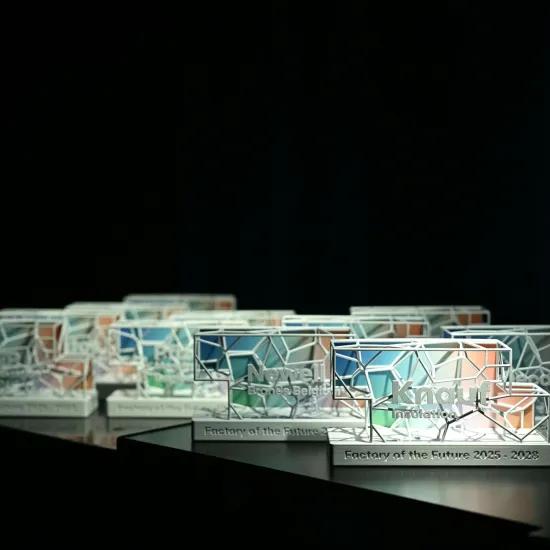Femtosecond lasers are now on the rise. Large-scale industrial applications, however, require higher capacities, and this is where the problem still lies. But evolution does not stand still, and the demo of the first 10 kW femtosecond laser is now a fact. A brief state of play.
What makes a 10 kW femtosecond laser so special? The difference with current lasers is that a femtolaser does not melt the material and therefore does not change the material and its properties. The typical heat damage ('heat affected zone') that occurs with traditional lasers is not present. The cause of this special characteristic lies in the ultra-short pulse durations, which are in the femtosecond time range (10-15s).
An overview of the current state of affairs can be found in the chart below. In addition to the commercial systems (up to 200 W), you can see the capacities of the prototypes that were realised up to (2,000 W), as well as the results achieved in the Fraunhofer CAPS project up to 10 kW (facility of Fraunhofer Cluster of Excellence Advanced Photon Sources).
As presented by Fraunhofer at the AKL conference in May 2022, this technology can be used competitively for various applications at power ratings of 1-10 kW. The pulse energy required (J/pulse - see Y axis) may vary from application to application. The power of 1-10 kW is then obtained by adjusting the pulse frequency (number of pulses/sec).
- De-coating of battery electrodes (10 µJ/pulse). This is a high-speed roll-to-roll application where the coating must be removed selectively without heating the underlying substrate. Because of the limited heating, femto-peak pulses lend themselves to this.
- Making many micro (100 µJ/pulse) and macro (100 mJ/pulse) holes at high speed and precision. This applies, for example, to the manufacture of filters that remove microplastics from water.
- Processing of ceramic materials (1 mJ/pulse). These materials are very hard and difficult to work with using standard machining techniques. Femtolaser pulses are highly suitable for this purpose and speed up the processing of ultra-hard ceramics such as SiC/diamond materials.
- Creating channels in a battery membrane to allow higher charge and discharge currents (1 mJ/pulse).
- Surface expansion for electrolysis (10 mJ/pulse). Chemical etching of the surface can now be done with the laser, which saves chemicals.
- As a drive for coherent and non-coherent sources of EUV and x-rays, or even neutrons. (>= 1 J/pulse)
From 10 W to 10 kW
These applications drive research into more powerful femtosecond lasers. In 2015, the common output power of this laser was 10 W. Today, in 2022, this is 200 W, with an initial peak of 1,000 W. The ILT Fraunhofer in Aachen recently demonstrated 10 kW output power at 800 fs (60 Mhz pulse rate) in an experimental setup.
(Source: Fraunhofer ILT)
At Sirris, we have been offering this new laser technology for several years now. We can answer your questions about this type of laser, as well as for small-scale validation of this laser technology on your application or material. With our 3+1-axis in-house femtosecond laser, research is being carried out into functionalising surfaces so that they have a better friction behaviour, water-repellent behaviour or improved markings, for example, ..... The fact that more powerful femtosecond lasers are being developed allows business cases to be made for applications in which larger areas have to be treated in a shorter time.
Do you want to know more about the possibilities with femtosecond lasers? Then please contact us!
This blog post has been published as part of the SURFACESCRIPT COOCK project.
Sources
Advanced Photon Sources - Extending the parameter Range of ultrafast lasers, Hans-Dieter Hoffman, AKL 22’, 4-6 May, Fraunhofer Institute for Laser Technology ILT Aachen.
Ultra-fast Thin-Disk Amplifiers, Thomas Metzger, AKL 22', 4-6 May, Fraunhofer Institute for Laser Technology ILT Aachen.





